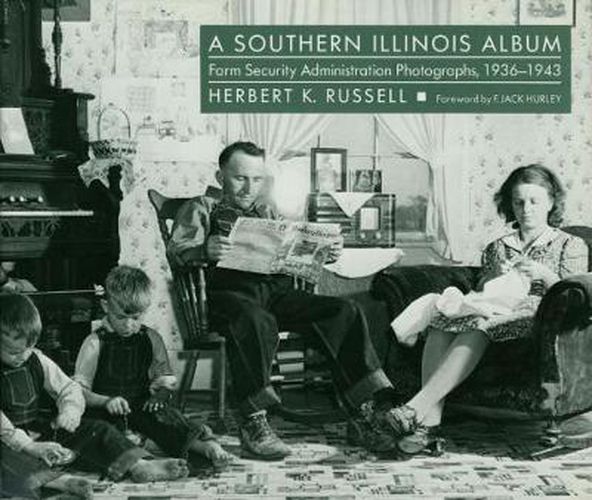Readings Newsletter
Become a Readings Member to make your shopping experience even easier.
Sign in or sign up for free!
You’re not far away from qualifying for FREE standard shipping within Australia
You’ve qualified for FREE standard shipping within Australia
The cart is loading…






Life on the road was anything but glamorous for Farm Security Administration photographers traveling through southern Illinois in the mid-1930s. Often their most promising subjects lived at the end of the worst roads, many of which lacked bridges, drainage ditches, or gravel. Outfitted with three government-issue cameras, flashbulbs, tripods, and film-processing chemicals, their job was to help
explain America to Americans
by seeking out and photographing the one-third of the nation FDR described as
ill-housed, ill-clad, and ill-nourished.
Featured in this book are more than one hundred photographs from the collection of a quarter of a million taken by FSA photographers between 1935 and 1943. These pictures capture life during the Great Depression as viewed in the coal-mining towns of Herrin, West Frankfort, and Zeigler; the river communities of Shawneetown, Cairo, and Grayville; the farming regions near McLeansboro, Newton, and Harrisburg-more than two dozen southern Illinois county seats, hamlets, and landings. Together they comprise a photographic portrait of the determination, hard work, and capacity to find ways to celebrate life exemplified by the people of southern Illinois during one of the most difficult periods of American history. FSA photographers helped to invent and popularize the
documentary style,
a type of photography in which pictures and their arrangement carry much of the information in a story. Intended to document the success of a government project, these pictures survived to preserve for later generations the story of the people of southern Illinois and how they endured the difficult times of the Great Depression.
$9.00 standard shipping within Australia
FREE standard shipping within Australia for orders over $100.00
Express & International shipping calculated at checkout
Life on the road was anything but glamorous for Farm Security Administration photographers traveling through southern Illinois in the mid-1930s. Often their most promising subjects lived at the end of the worst roads, many of which lacked bridges, drainage ditches, or gravel. Outfitted with three government-issue cameras, flashbulbs, tripods, and film-processing chemicals, their job was to help
explain America to Americans
by seeking out and photographing the one-third of the nation FDR described as
ill-housed, ill-clad, and ill-nourished.
Featured in this book are more than one hundred photographs from the collection of a quarter of a million taken by FSA photographers between 1935 and 1943. These pictures capture life during the Great Depression as viewed in the coal-mining towns of Herrin, West Frankfort, and Zeigler; the river communities of Shawneetown, Cairo, and Grayville; the farming regions near McLeansboro, Newton, and Harrisburg-more than two dozen southern Illinois county seats, hamlets, and landings. Together they comprise a photographic portrait of the determination, hard work, and capacity to find ways to celebrate life exemplified by the people of southern Illinois during one of the most difficult periods of American history. FSA photographers helped to invent and popularize the
documentary style,
a type of photography in which pictures and their arrangement carry much of the information in a story. Intended to document the success of a government project, these pictures survived to preserve for later generations the story of the people of southern Illinois and how they endured the difficult times of the Great Depression.